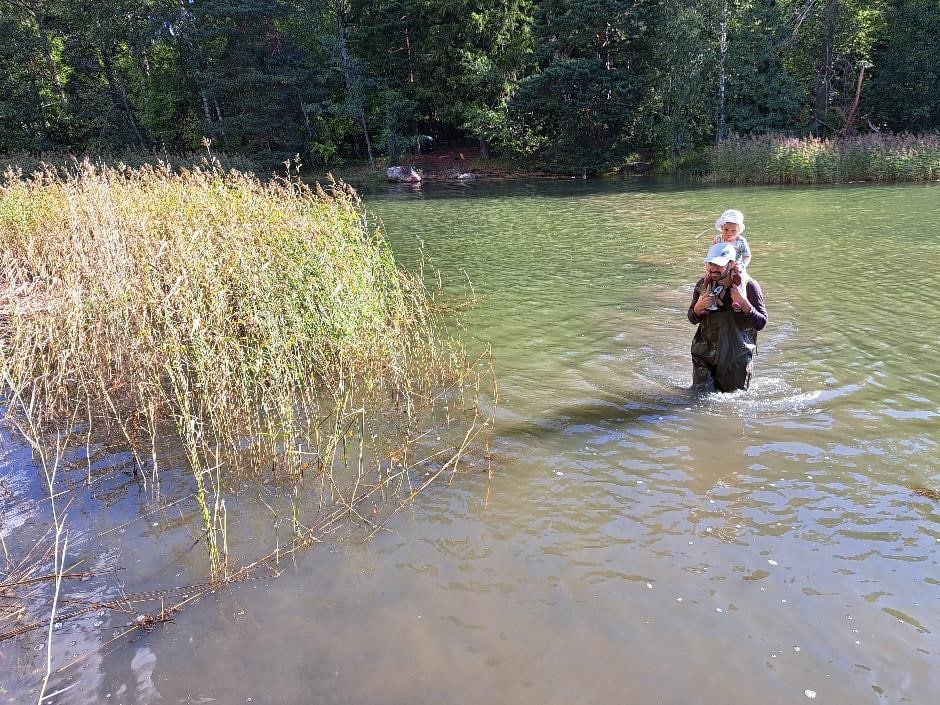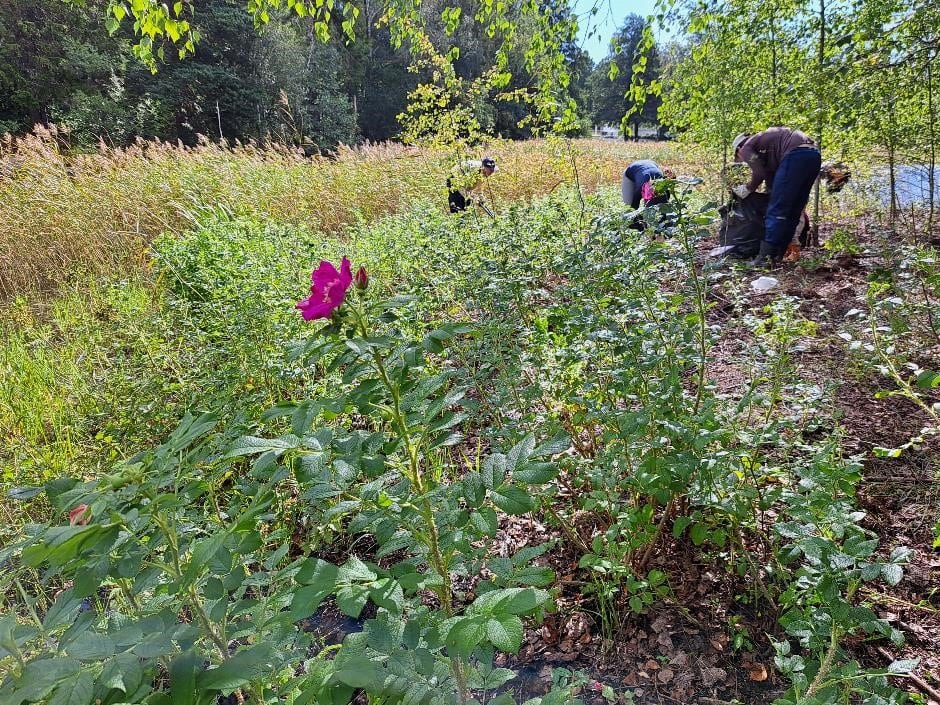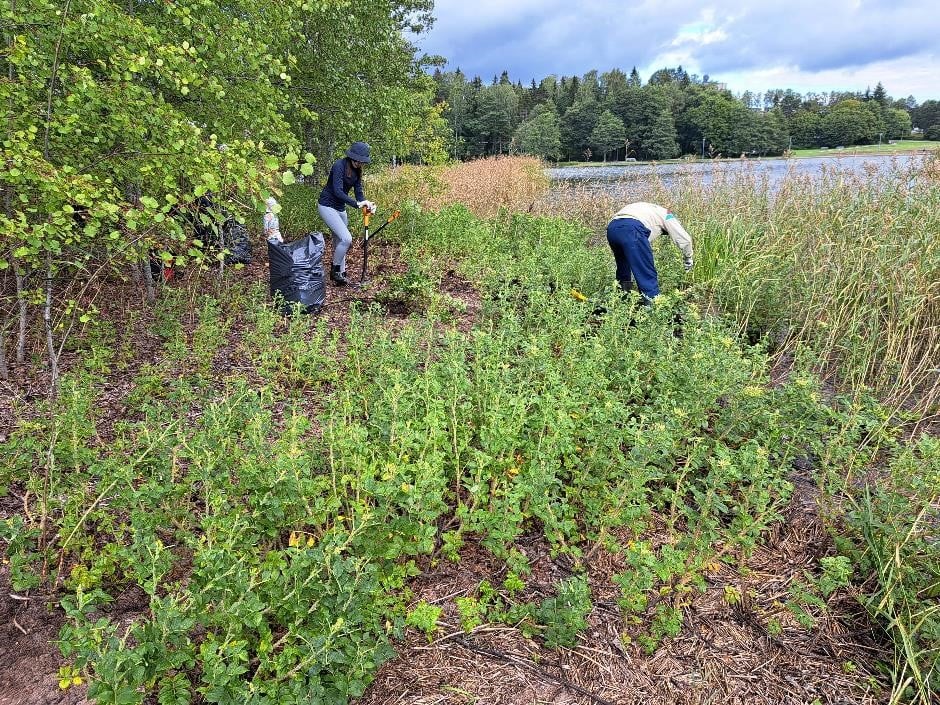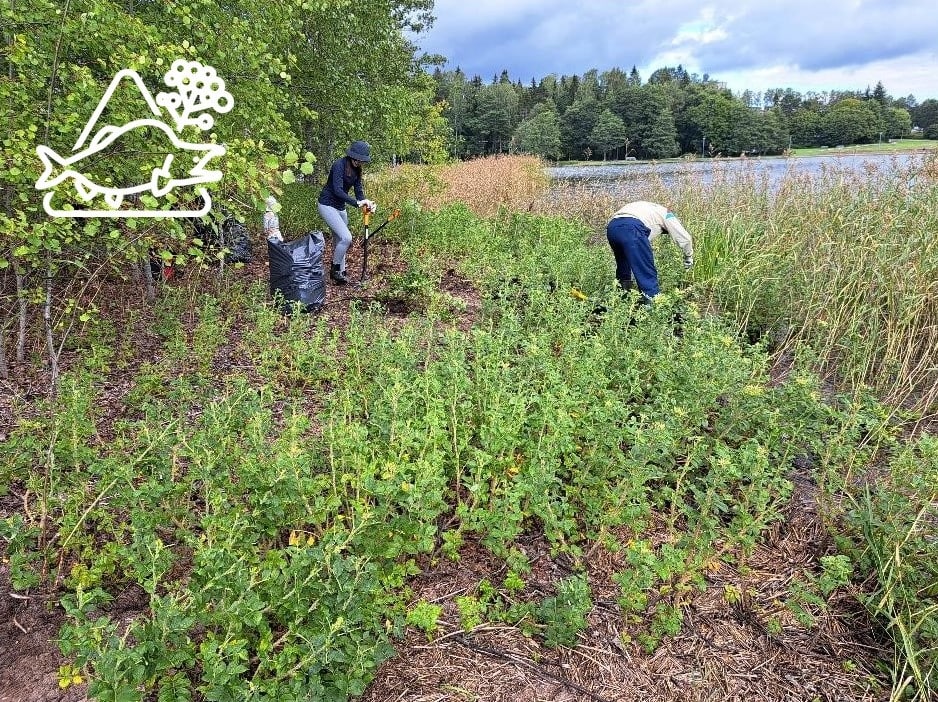The morning is bright and sunny over the Otsolahti outdoor recreation area in Tapiola, Espoo. On this Saturday in August, WWF has organised an open-to-all-comers Japanese rose removal event on a small island just off the coast.
The volunteers are directed by WWF volunteer work coordinators Jaana Meronen and Timo Hast. The 10-person volunteer work coordinator team consists of people not employed at the WWF office, who run the field operations and receive rewards for their efforts. They are an invaluable help when it comes to organising volunteer work.
The water level is especially high on the day of the event. The 10 volunteer workers put on their waders so they can get to the island with dry feet.

WWF’s volunteer work coordinators began their work in 2021. Jaana applied to become a volunteer work coordinator after her interest in invasive species was sparked at a Finnish Nature Association school visit training event.
“In 2021, I was very unsure whether I had enough knowledge and skills to do this. Now I know that anyone can participate in the fight against invasive species. You learn to identify the key species quickly, and you can remove them at your own pace,” Jaana says.


The Japanese rose spreads through seed dispersal and root suckers. The volunteers dig up the Japanese roses with their roots – using a shovel or by hand. Since there is not enough time to destroy all the rhizomes in their entirety, some bushes are killed by removing their shoots completely, starving them of energy. The island’s Japanese roses have only this year’s shoots left, since WWF removed all above-ground rose bushes the previous year.
The volunteers are enthusiastic about their work. From time to time, they take breaks to enjoy the surrounding nature, the company of like-minded people and, of course, their snacks. The volunteers also learn about the properties of invasive plants and removal methods.
Sometimes, Jaana feels like the sea of invasive plants in front of her has grown hopelessly wide. Fighting the good fight requires patience and long-term orientation. Each plant removed reduces the seed bank.


The hardworking volunteers manage to work their way through one third of the island’s area. There is one thing left to do: Some thirty bin liners full of Japanese roses must be hauled from the island to the municipal pick-up point.
The day draws to a close, but WWF will continue to monitor the area, and soon the volunteer work coordinators will lead a new group of volunteers to the fight to protect biodiversity. From time to time, the island is also visited by deer, who strip the Japanese rose bushes bare – contributing, in their own way, to the fight against invasive alien plants!
Writer: Vilja Tupola (WWF)
Photos: Timo Hast (WWF)
